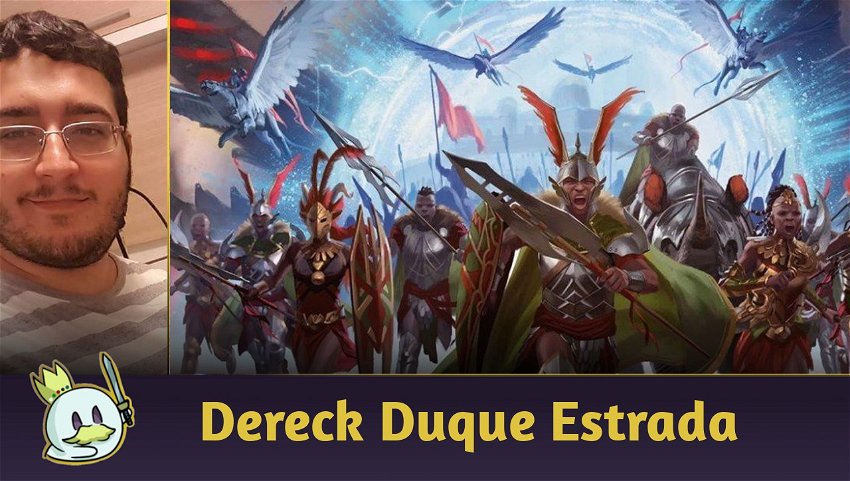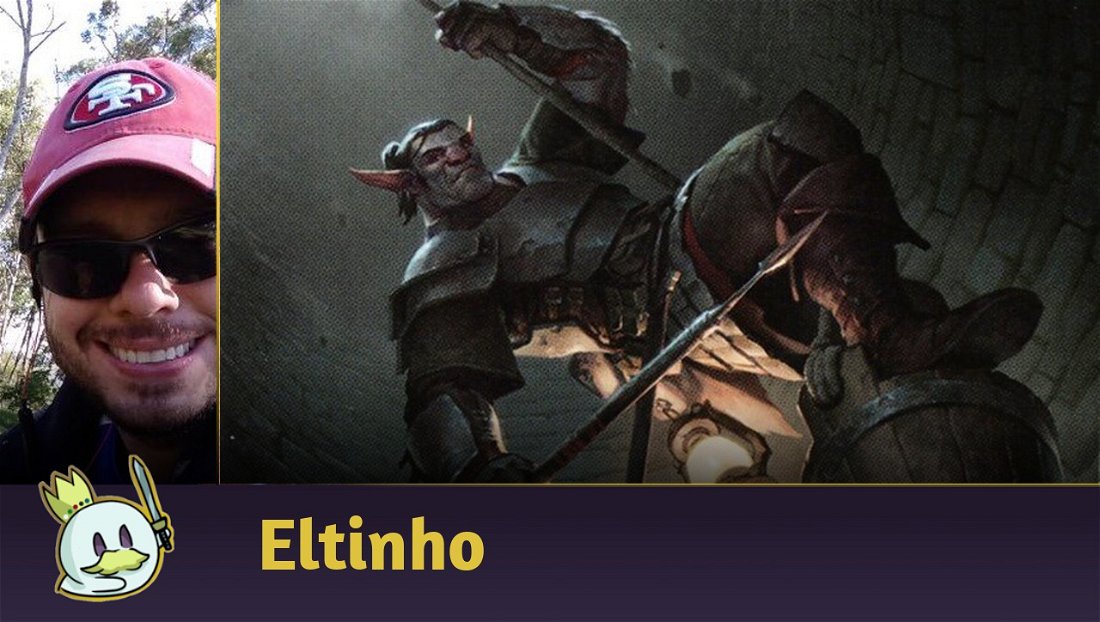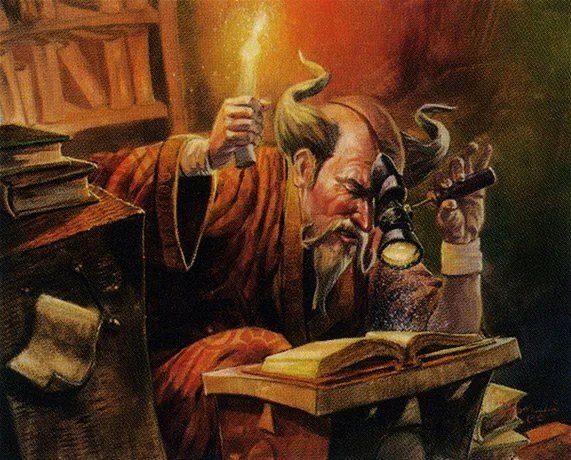As an Easter gift, Wizards closed the spoiler season for March of the Machine, the set that will be released on the April 21 on tabletop and on April 18 at Magic Arena, with the Pre-Release taking place between April 14 and April 20.
In this article, we're going to look at the set with a focus on Limited formats, to give you a better idea of how to get the most out of prerelease events and get good farms in Drafts in Arena.
So let's see what March of the Machine has in store for us!
Ad
About Limited
March of the Machine (MOM) brings us some new mechanics, but most of all, it brings us a new card type: Battle.
What is a Battle?
Battles are permanents that enter the battlefield with defense counters and when they are defeated (when their counters are cleared) they transform and are cast without paying their mana cost. All Battles in MOM are of the Siege type and follow the same pattern. An effect when they enter the battlefield, an opponent is chosen to protect the Battle and when they are defeated, they become a spell to be cast for free.
For those who are eager to know more details about Battles, we have a great article about it.
It is worth considering that ,because it is a spell cast after the battles are defeated, they can be countered, and since this can be foreseen, the value of counterspells can be higher in this set due to these cases.
March of the Machine's Mechanics
Before analyzing the archetypes, it's important to evaluate all the mechanics we have so that we can understand how to work with each card.
Convoke
The first set mechanic references Ravnica, being the set it was released in.
Convoke lets you tap your creatures to pay one colorless mana or a mana equal to the creature's color, allowing you to play spells above your mana curve for cheap.

Backup
Here we have a new mechanic, always linked to creatures. This keyword will always come with a number associated with the backup's level.
It works like an ETB ability (abilities triggered when the creature enters the battlefield), putting +1/+1 counters equal to its level, and then the creature that received the counters will have all the abilities of the creature with backup until the end of the turn.

Incubate
Another ability released in MOM is Incubate. This one creates Incubator tokens with a number of +1/+1 counters on it equal to the ability's level, the tokens are artifacts with the ability to pay 2 colorless mana to transform, becoming a 0/0 Phyrexian artifact creature.

Prowess
Prowess is yet another ability that returns in the set, referencing Tarkir, it is triggered every time a noncreature spell is cast, and the creature gets +1/+1 until the end of the turn.
It's a keyword often seen in strategies focused on cantrips, keeping the number of cards in hand, using cantrips and other spells to increase the creature's power.

Ward
Introduced in Strixhaven, Ward is an increasingly popular keyword in Magic. It counters spells or abilities that target the creature unless they pay a certain cost. Its greater presence is due to providing protection which still allows the opponent to interact with the creature, unlike Hexproof, for example.
Ad
It's worth noting that interactions which have in their description that cannot be countered can target creatures with Ward without paying extra costs, as the spell is being countered rather than failing to interact with the permanent.

Transform
In MOM, we have several creatures that transform into other creatures, or other permanents, after paying the transformation cost.
The Preators transform into Sagas, returning to their original form after completing the last chapter of the saga.
In MOM, the transformation represents that the creature was compleated by Phyrexia, all having a better body and new abilities after transforming. This allows your creatures to improve when you have mana to spare.

Cycling / Landcycling
We also have the return of Cycling, which was a keyword last present in Ikoria. In it, we pay the cycling cost and discard the card and draw another one. However, in MOM we also have Landcycling, which are basically cards that will be cycled, but instead of drawing, you will look for land of the type described in your deck and put it into your hand.
They are an excellent color fixing, making it easier to adjust colors and perhaps allowing for decks with more than two colors.

Surveil
Another ability from Ravnica, Surveil works with a number which defines the amount of cards from the top of the deck that you can look at and choose if they stay on top and in what order they stay, or if they are put in the graveyard.
Surveil is a very interesting mechanic for decks that care about the types or number of cards in the graveyard, and can greatly accelerate strategies that have these interactions.

March of the Machine Limited Archetypes
We have already evaluated the main keywords that we will find in the set, now we will visit each of the archetypes related to the combination of colors that we have available.
Azorius Knights Tokens
In the blue and white combination, we have a focus on knights. A game plan that aims to use tokens and lords to increase the power of the board along with its size and close the game aggressively.
Marshal of Zhalfir, Invasion of Xerex and Invasion of New Phyrexia are pieces that indicate a good path for the archetype.
Invasion of Gobakhan is an excellent support, allowing to delay the opponent and if it is defeated, its back is a good enchantment that rewards a large board, growing the attacking creatures and increasing its power. Another battle that can be an advantage in this archetype is Invasion of Belenon, increasing your board when it enters and, if defeated, allows your creatures to get stronger.
Ad
Finally, Inspired Charge is an excellent card for closing the game or adding the missing damage to defeat a battle.

Best Common Cards

Best Uncommon Cards

Orzhov Phyrexians
In the white and black combination, we have the Incubate and the Phyrexian tribe, also having a subtheme of sacrifice of artifacts or creatures.
Although it has a game plan of growing the board and using lords to increase the board, the need to transform the tokens makes the deck slower, needing to have a more interactive plan than aggro, taking advantage of sacrifice themes to use the untransformed tokens.
Cards like Progenitor Exarch, Grafted Butcher Invasion of New Capenna, Sculpted Perfection, or Tiller of Flesh are excellent reasons to be in the archetype.

Best Common Cards

Best Uncommon Cards

Boros Backup Aggro
As usual, the red and white combination aims to close the game as soon as possible, and for that, it uses low-cost creatures and abilities that enhance the Backup mechanic, with cards like Dusk Legion Duelist that provide more mana, or with Mirror-Shield Hoplite which doubles its effect.
Voldaren Thrillseeker can function as a Fling of your biggest threat, allowing you to supplement the damage your opponent is lacking. Archangel Elspeth is another card with a strong synergy with the deck's strategy, providing the possibility to grow your board with tokens or even granting evasion with +1/+1 counters.
Boon-Bringer Valkyrie is the "bomb" of the archetype, its combination of Keywords alone already generate a considerable impact in combat, being able to provide them to other creatures and cause good damage to your opponent, gaining life in the process or forcing favorable trades to you due to the first strike.
Another way to use your board is with Convoke, and Knight-Errant of Eos is an excellent late game card to replenish your hand and take advantage of smaller creatures, Shatter the Source and Stoke the Flames are good removals to take advantage of the board and beat some Battles you control.
Invasion of Kylem, Invasion of Gobakhan and Invasion of Belenon are battles that provide good synergy with this strategy, and can be played in more advanced turns to defeat them immediately.
Ad

Best Common Cards

Here is worth a point of attention: Scrollshift, in this type of deck, is incredibly versatile, since Backup is an ETB ability. It can grow blockers, add abilities, protect from removals, and more.
Best Uncommon Cards

Selesnya Counters
Moving on to the green and white combination, we have the interaction with +1/+1 counters. The strategy will attempt to acquire value with low mana creatures that generate value as new counters are placed on your permanents, and for that, mechanics like Incubate and Backup are key pieces to get these counters while increasing your board.
Botanical Brawler, Dusk Legion Duelist, Ozolith, the Shattered Spire and Kami of Whispered Hopes are clues to the archetype, being pieces that increase the value of your counters, with the Dusk Legion Duelist generating card advantage along with it.
Invasion of Moag is one of the best Battle for the archetype, having a positive impact on both sides of the card. Storm the Seedcore is a way to have an explosive turn, allowing a good offense and still maintaining defense.
Doomskar Warrior is another card with good interaction in the archetype, it puts a counter with the Backup and its static ability allows finding more creatures. Archangel Elspeth is another very efficient piece in the archetype.

Best Common Cards

Best Uncommon Cards

Dimir Control
In the blue and black color combination, we have a control footprint, having cards that care about the number of cards in the opponent's graveyard like Sheoldred, See Double and Tenured Oilcaster and cards that feed the Graveyard to reuse its resources in sequence, such as Unseal the Necropolis, Breach the Multiverse Invasion of Amonkhet and Halo-Charged Skaab.
As this strategy focuses on heavier spells, it is necessary to have spells that buy time or hold the game in the first turns, so that the relevant ones can be really effective.
Assimilate Essence allows you to counter an opponent's spell while also creating an Incubator token, which can become a blocker. Deadly Derision is an excellent removal, which still works to ramp up and help you reach the larger volume of mana needed for the spells that will be your wincondition.
Ad
Halo Forager plays a key role by letting you take advantage of spells that are in your graveyard to help control the game.
Invasion of Fiora is very useful in controlling the board, for times when specific resources aren't enough.
Hidetsugu and Kairi, Aetherblade Agent and Rona, Tolarian Obliterator are excellent supports for the deck.
A point of attention is that the default configuration won't be applied, for this game plan it will be important to have removals and many cards that offer some 2-for-1 effect.
Spells with Incubate that have an interaction with the opponent's creatures can be very interesting, allowing to delay the opponent's game and often managing to create favorable trades or blocks. Control in Limited is more related to maintaining resources by making use of creatures that block well and generate value, as access to sweepers are scarce.

Best Common Cards

Best Uncommon Cards

Render Inert is a great way for decks with few creatures to beat Battle to get the most out of them. If you have access to some, it might be interesting to have more battles within your deck.
Izzet Convoke
In the blue and red combination, we have the archetype focused on Convoke, mainly focusing on instants and sorceries. We have as key pieces Joyful Stormsculptor and Invasion of Segovia, being important to defeat the battle beforehand to take full advantage of the Shaman's abilities.
In this archetype, spells that make more than one body on the board are interesting to feed the convoke, allowing access to bigger spells with less mana. Preening Champion, Ral's Reinforcements and Xerex Strobe-Knight are some examples of cards that allow this type of strategy.
Baral and Kari Zev, Chandra, Hope's Beacon, Urabrask and Chrome Host Seedshark can take advantage of instants and sorceries for a lot of value.
Invasion of Regatha and Khenra Spellspear are cards that provide aggression to the archetype, managing to add damage while maintaining a spellslinger grip.
A point of attention is that because it is an archetype with few creatures, it is important to have means to protect them, and Negate, Change the Equation and Artistic Refusal are the accessible counterspells in the set. Saiba Cryptomancer works as a resource to cast and protect your key piece.

Ad
Best Common Cards

Best Uncommon Cards

Simic Transform
In the blue and green combination, we have an interaction focused on the DFC (Double-Faced Card) cards that represent cards with transformation. Its composition will be cards that have abilities with transformed permanents, and that means that Incubator tokens, when transformed into creatures, count towards this synergy, being relevant in the archetype.
Invasion of Pyrulea allows you to adjust the top, correct your mana and have card advantage, as well as increase the difficulty of taking out your creatures when transformed. Mutagen Connoisseur is another piece that takes advantage of transformed creatures, becoming stronger as the game progresses. Glistening Dawn can generate bombs through tokens, while Corruption of Towashi makes its transformed parts to generate resources for your hand.

Best Common Cards

Best Uncommon Cards

Rakdos Sacrifice
For red and black, we have the classic sacrifice archetype. In the set, there are many ways to activate the sacrifice, but there are few static abilities taking advantage of it, being a bit more difficult to accumulate triggers; Ichor Shade and Invasion of Azgol are some of those options.
Akki Scrapchomper and Stormclaw Rager are resources to draw cards along with the sacrifice, while Terror of Towashi can bring back sacrificed cards.
Creatures that have ETB abilities or when they die, especially if they create one more creature in the process, are excellent fuel for the archetype, Etched Familiar, Furnace Gremlin and Ichor Drinker are some examples. Furnace Reins is an excellent option to generate value by making use of the opponent's resources.

Best Common Cards

Best Uncommon Cards

Golgari Incubate
Within the green and black combination, we have the interaction with the incubate mechanic, and Elvish Vatkeeper and Glissa, Herald of Predation are excellent reasons to be in the archetype, being the engine and fuel of the archetype at the same time.
Ad
They work very well with cards like Converter Beast, Blighted Burgeoning, Glistening Dawn and Traumatic Revelation and are excellent supports, having an early game more focused on preparing the conditions to transform the incubator tokens, which can present a powerful late game. Grafted Butcher allows you to grow the power of tokens by empowering all of your cards with incubate.

Best Common Cards

Best Uncommon Cards

Gruul Battle
In the red and green combination, the archetype seeks to gain value by defeating Battles, so its creatures have effects related to battle cards.
Cards like Rampaging Geoderm, Rampaging Raptor, War Historian and War-Trained Slasher are capable of forcing blocks that are disadvantageous to the opponent, forcing them to protect battles or allow them to transform.
To do so, it's vital to get the relevant battles to its game plan, and Invasion of Ergamon is the most relevant, acting as a tutor for other battles by transforming and generating versatility for the deck.
Invasion of Regatha and Invasion of Muraganda as they act as removals, will tend to be the best pieces. Invasion of Shandalar and Invasion of Ravnica are great additions if they are in your pool.

Best Common Cards

Best Uncommon Cards

Removals
In the current format, where battles can be a differentiating factor for victory, direct damage removals can gain even greater weight. So let's understand how our creatures are divided in MOM:
| Toughness | Quantity | % |
|---|---|---|
| 1 | 28 | 15,64% |
| 2 | 42 | 39,11% |
| 3 | 39 | 60,89% |
| 4 | 40 | 83,24% |
| 5 | 18 | 93,30% |
| 6 | 7 | 97,21% |
| 7 | 2 | 98,32% |
| 8 | 2 | 99,44% |
| 9 | 0 | 99,44% |
| 10 | 0 | 99,44% |
| 12 | 1 | 100,00% |
Ad
Based on this table of creatures from the set, we can consider removals like Volcanic Spite, Elspeth's Smite and Collective Nightmare with good efficiency, taking 60% of the possible targets.
Invasion of Regatha and Stoke the Flames deals with 83% of the set, being able to transform 55% of Battle cards directly, allowing it to take advantage even in situations where the board is apparently stable.
Shatter the Source, although it has a high cost, it makes up for it with the convoke, being able to deal with 97% of creatures, in addition to 94% of battles.
Always keep this table in mind, as it will allow you to understand what your opponents can use and what lines they can adopt on a locked board.
Conclusions
I'm really looking forward to seeing the archetypes in action! The life lands help with manafixing, and in addition, there is the possibility of a splash for a third color, considering that many archetypes are close to each other (Golgari and Orzhov or Selesnya and Boros, for example), and can be tested to increase resources within the same synergy.
I believe that the most linear archetype is the Azorious Knights, but I confess that I would like to play as Gruul to test the efficiency of Battle cards.
I hope I could help you prepare for Pre-Release events at your local stores, and for farming in Drafts at Magic Arena!
Which archetype are you excited to try out?

If you have any questions, feel free to leave them in the comments!
Thanks for reading and until the next article!














— Comments0
Be the first to comment